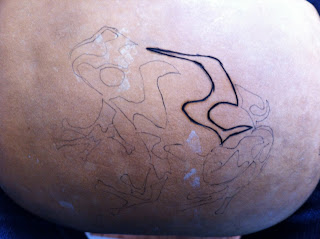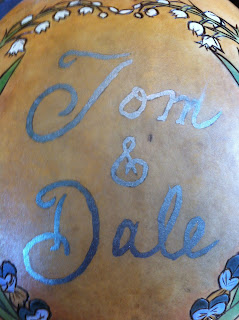Mother's Day is usually when my garden is tilled. It's always part of my husband's gift to me. This year that didn't happen, thanks to Mother Nature and her torrential rains Friday and Saturday. Still, Sunday was beautiful, and dry enough to get my raised bed for my strawberries placed and filled with some very stinky garden soil. That would be Miracle Grow Garden Soil. It smells like rotten sewage. I hope that means it's chock full of good nutrients for my strawberry plants when they arrive.
My asparagus arrived about two weeks ago, which is two weeks earlier than they told me. Since I don't like to plant before May 15, I had to read up on how to keep them until then. Simple, just put them in the fridge. But I also had to read up on how to plant them. That's not a simple. They will be a permanent fixture in the garden, so I wanted them away from the tilled patch. Since the strawberries are also a permanent fixture, I decided to plant the asparagus the length of the garden behind the strawberry bed. In the picture below, it will form a row in line with the strawberry bed heading toward the trailer in the background.
.jpg) |
| Mommy's Little Helper |
A quick little tangent here . . . I have found the perfect way to season just about any veggie. Butter, salt, black pepper, and garlic. Now I use garlic powder because it dissolves into the butter when a minced clove would not. The flavor is probably better with a clove, but I'll stick with the powder for now. And please don't ask me for measurements. The only time I measure anything is when I'm canning, and only then because I have to. Oh, and for baking stuff, too, because cackes and other sweet treats just aren't right if you don't measure.
So I was talking to my husband after visiting my neighbors one day. (Here I'm leaving information out because I don't want to be assumptive or jinx anything.) Anyway, in talking a few things over with him he said that I could have a horse if we had the land to keep it ourselves (either here or somewhere else). I can't have a horse and keep it at the neighbors' house just because they'll let me. He doesn't want to pay board, citing it as a waste of money. I totally get that. And I wasn't arguing with him on this. This was the first time he has ever accepted the fact that I am a horse woman, and once a horse lover, always a horse lover. He has told me that he doesn't want me riding anymore (not that I have in quite some time) because it's too dangerous. "Horses are wild animals," he once told me while I rolled my eyes behind his back. But apparently, he is coming to terms with the fact that I will never give them up. Maybe my obsessive following of horsey pages, rescues, and activists groups on Facebook have shown him that. Honestly I don't care why he's come to this. The important part is that he has. He even pointed out that he said he would buy me a horse. (But, you know, fellow horse enthusiasts, horses need friends. ;) ) I found myself foolishly trying to convince him that I would feel obligated to pay the upkeep costs myself, and that I wouldn't be comfortable without having the money for emergency situations. (Past experience has proven that to me.)
We are worried about the farm across the street. What if they didn't sign that tax thingy that forces the land to be used as a farm for 99 years before it can be developed? That would mean that a developer could buy the 40 (+/-) acres and use it however they want. Although, I think a good portion of it would be expensive for them to try to develop because of water and boulders. But regardless, I love looking out my front windows, or playing on the front lawn with my boy, and seeing a vast field with bronze-tipped Timothy dancing in the wind. The thought of seeing the bordering trees cut down and houses pop up sickens me.
But the 1.5 acres directly across the street form us is owned by my neighbors next-door. The ones that have the chickens Bug so loves to feed. Imagine having that piece. If developers did come in to desecrate the farm, we could save the small piece in front of us and plant a row of trees along the back to block the atrocities.
And, while he didn't exactly say we could have them, my dear husband said that chickens would have to stay on this side of the road to offer more protection from the foxes around here. I know my neighbor won't have chickens forever, and Bug can't eat store-bought eggs. Most places that sell farm-fresh eggs are priced high, at $3 or more a dozen, so getting our own chickens is inevitable if you ask me.
.jpg) |
| In the chicken house. |
 |
| Bug loves every aspect of "gourding." |
.jpg) |
| Sharing the love of farming. |
.JPG)


.jpg)
.jpg)















































